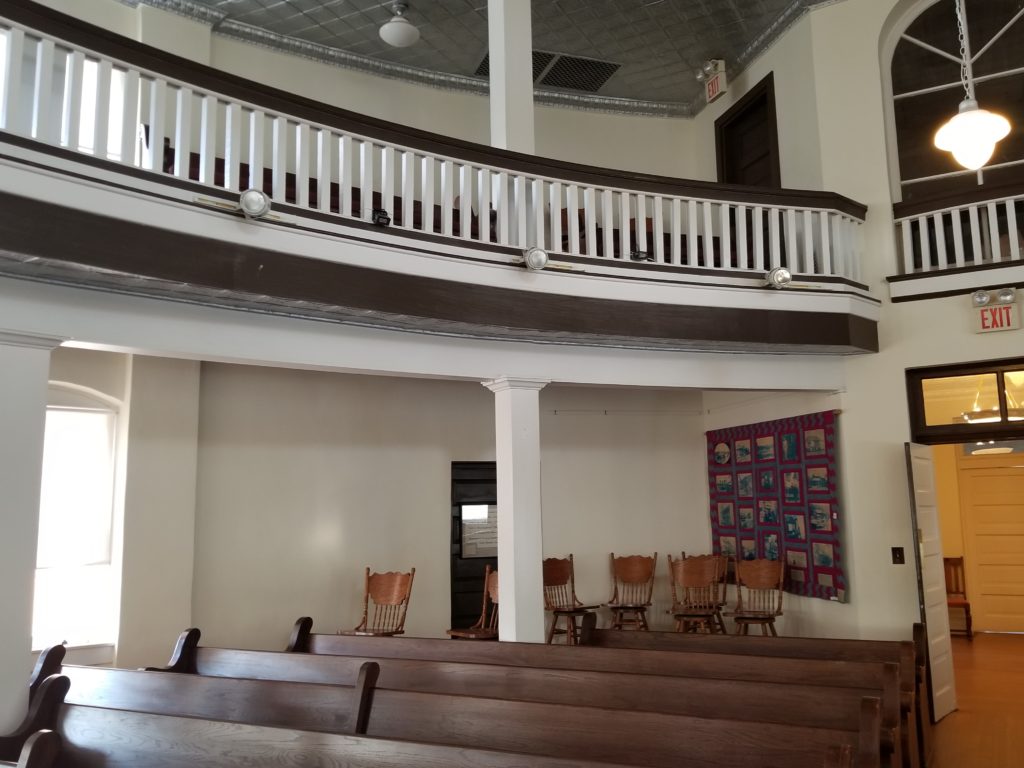Home of a Fictional Moment
This is it. The Monroeville Courthouse, the place that inspired Harper Lee’s novel To Kill A Mockingbird and the place where her own father, inspiration for the fictional character Atticus Finch, is said to have held court. Attitcus helped us understand the color of justice and holds a seminal place in our American literature as well as our hearts. We all remember learning the importance of Atticus’ truth: “You never truly understand a person until you consider things from his point of view–until you climb into his skin and walk around it.” When the novel appeared on the 1960s landscape, it was considered an explosive work of art, a start to something important at the onset of a tumultuous decade. The novel won the Pulitzer Prize in 1961 for fiction. But is it enough for today’s contemplations about race?

I visited here in April 2018. I attended the live performance of the play on the lawn of the courthouse. I took a tour of the courthouse during intermission. I peered up to the balcony where Lee describes the throngs of Black folk in the segregated section, peering down on the trial of Tom Robinson. I was standing in the legal house of Atticus Finch. I walked on the creaky floors and sniffed at the dusty air. I visited the gift shop and got the t-shirt. It was all quaint and nostalgic.
The next day, I went in search of Harper Lee’s childhood home which, I understood, had once sat next to Truman Capote’s aunt’s home, where he summered and forged a friendship with Lee, a bond of two neighbors (Scout and Dill) that was superbly reflected in the book. There was one historical marker on the road indicating where Capote’s home had once stood. A Mel’s Dairy Dream sat next door where Lee’s home should have been, surrounded by a blacktop parking lot. The Lee home is long gone and paved over. The residents of Monroeville had preserved the fictional courthouse moment with great pageantry but had forgotten the people responsible for it.
This disappointment soon gave way to a realization. This courthouse is the preservation of a fictionalized truth no matter how real it feels in my memory.
I had traveled to Monroeville after attending a ceremony, both somber and uplifting, for the opening of the National Memorial for Peace and Justice in Montgomery, Alabama, with my friends Lee and Michele. This memorial, also known as the lynching memorial, encapsulated so much raw history and emotion for me. [Read more here] The music, the poetry, the sculptures, and the incredible awareness of it all were still heavy on my heart when I arrived in Monroeville. Perhaps visiting the home of one of my childhood literary heroes, after taking in such a moving memorial of our actual history, was destined for disappointment. But I couldn’t help noticing the stark difference between the two places.
One had preserved a righteous moment in the past when a fictional character stood up for equal justice of a Black citizen. The other demonstrated the failure of actual justice that resulted in the deaths of almost 5,000 citizens, mostly Black, mostly Southerners between 1890 and the 1950s. If Attitcus’ courthouse moment was an awakening for a 1960’s America, the lynching museum ought to result in our collective insomnia in the 21st century.
Atticus’ moment, as important as it was, was just one moment that inspired readers to examine their own biases and perspectives. This reaction demonstrates the influence of literature at its maximum power and should not be discounted.
But the other place, the lynching memorial, seemed to reckon with the past not just memorialize it. The starkness of the truth was set against the abundance of the sins. So many had died in such a cruel way that had been perpetuated and celebrated by some, shrugged off by others. The collection of those moments is overwhelming but also eye-opening. It is a living memorial, imbued by the resonance of the souls it remembers. It asks something of its visitors: learn, reflect, remember, and change. It remembers who suffered at the hands of violent action and inaction.
The difference between the two places is more significant than just fiction and non-fiction. One holds onto a single moment, the other releases many horrible moments. One celebrates the past, while the other opens it up for examination and conversations into the future, hopefully.
When we read fiction, the emerging truth feels personal and palpable. We are experiencing a realization as the characters do. It can be a spark or an opening for dialogue with others or a kind of marker in our own development and awareness of our world. But if it stops there and we don’t see how that truth works, or doesn’t, in our world, in our history, in our reality—today and into our future—we miss an opportunity to understand, to discuss, to act, to change. My visit to the mockingbird courthouse came at a critical time as I found myself on a long, winding journey of self-awareness of our history, one that continues today, as I was learning what it meant to walk around in someone else’s skin. And suddenly, non-fiction had become so much more important than fiction to me in this conversation about race, even as fiction’s role in highlighting the difficult truths we all hate to face is still profoundly important.
Perhaps choosing the means to learn is not the point but rather, learning through whatever means possible.



WOW!
Thank you!
Great point in this blog but it probably would have made more sense to me if I had read to kill a mockingbird ?
Trust me – it was a good read in my 1970’s English class.
I think reading To Kill A Mockingbird is no longer important in our school systems. This shows how important it is to want to learn truth and to act on that desire. There is a journey that we all need to travel.
Exactly right!